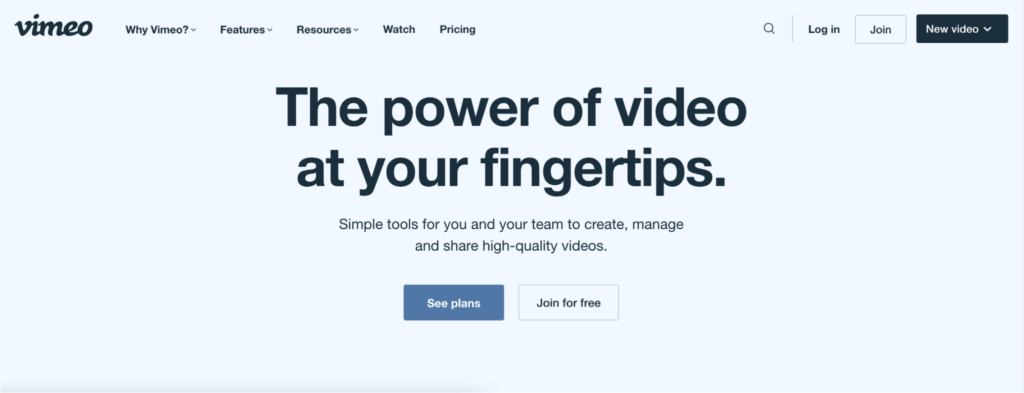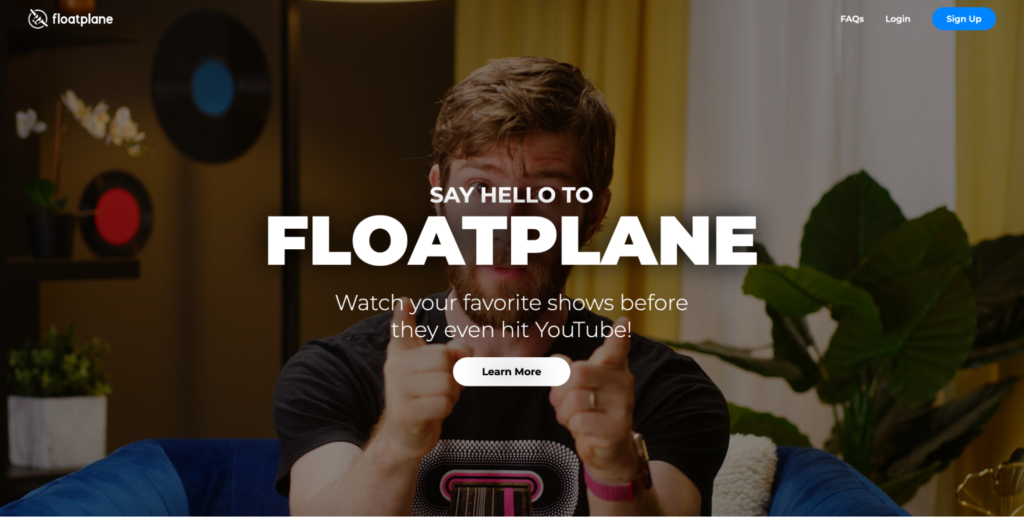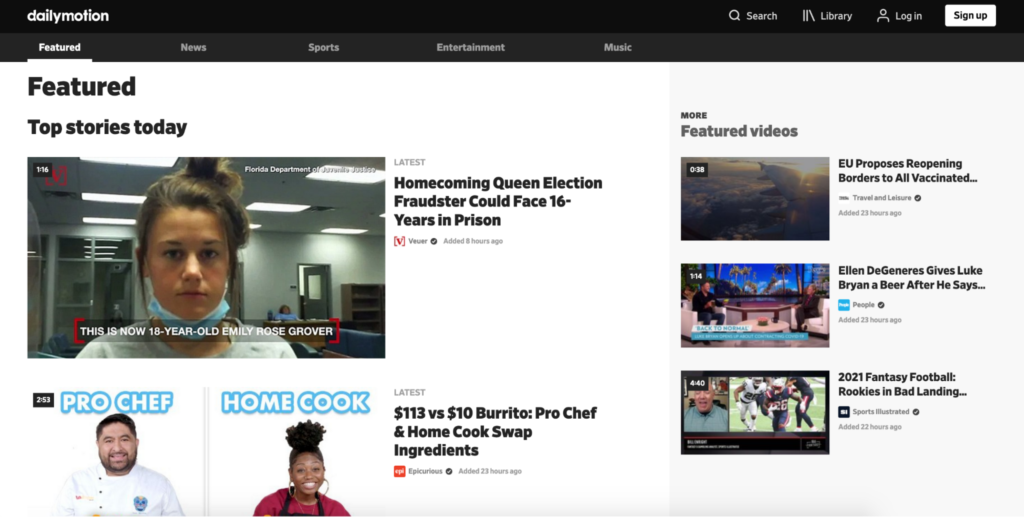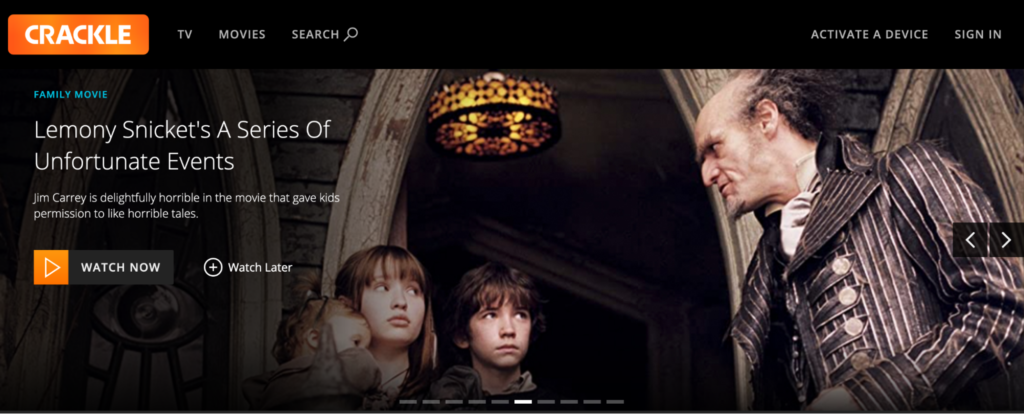Even though you should definitely create YouTube videos, there are benefits to posting and promoting content on these YouTube alternatives as well.
At the very least, alternatives to YouTube give you an opportunity to reach the people who don’t watch videos on YouTube. As a creator, it’s worth exploring for this reason alone.
And it doesn’t have to take up a lot of extra time. In most cases, posting your video content on alternative platforms is relatively easy.
Scope out your options with our in-depth review of nine YouTube alternatives.
Pro tip: Cross-posting your videos on alternative platforms is a great option. But posting all-new content is even better. Do it in a snap with Biteable. Use the world’s simplest video maker to compile and repurpose your favorite YouTube clips into all new content.
Create videos that drive action
Activate your audience with impactful, on-brand videos. Create them simply and collaboratively with Biteable.
Why use alternatives to YouTube?
In addition to accessing the huge audience that’s not on YouTube, there are other reasons to post and promote videos on alternative platforms. Each YouTube alternative offers different monetization methods, content emphasis, and even geographic reach.
Reach different customers
YouTube has over 2.3 billion users. That leaves roughly 5.3 billion people that might prefer the alternative platforms.
However, it’s not all about absolute numbers. Different video platforms also attract different types of people.
Many cybersecurity and IT professionals avoid YouTube because they don’t like how the platform collects and utilizes user data. Certain video creators prefer YouTube alternatives that place more emphasis on creative video techniques.
Also, paid platforms appeal to a very different audience than free platforms. Viewers who are willing to pay for content are usually less price sensitive about other purchases.
Even though a lot of people use YouTube, it’s free for viewers. You may find a higher concentration of your ideal audience on alternative platforms, especially if your value proposition is based on quality, rather than a low price.
Run more experiments
If YouTube is your primary video publishing platform, trying new things on there can be risky. Even if you tell viewers that you’re just running an experiment for a video or two, you can still lose subscribers if your audience doesn’t like your experimental content.
Use alternatives to YouTube to gauge interest in a new video format or type of content before presenting it to your main audience. This minimizes the cost of failure, so you can innovate and create faster.
Create different types of content
In recent years, YouTube added support for different types of content, like live broadcasting. But YouTube is still a platform that’s designed for pre-recorded videos. And the YouTube algorithm prioritizes certain types of videos.
Many alternative video hosting platforms have better support for other types of video content. Their algorithms also prioritize videos differently, so you could potentially get lots of attention on alternative platforms for content that doesn’t do well on YouTube.
Get more profit per viewer
YouTube uses an ad supported model. And Google, YouTube’s parent company, keeps 45% of the ad revenue.
If you monetize your YouTube videos, you’ll get about $10 per 1000 viewers (about $0.10 per view) on average. That could add up to a lot. But there are other monetization models available.
Alternative platforms offer different ways to monetize your videos that can bring in more profit per viewer than YouTube. You may need to market your videos differently or change your outro scenes a little bit to use the most relevant call-to-action.
But if monetizing videos is part of your business plan, some YouTube alternatives offer more lucrative options.
With these benefits in mind, here’s a rundown of the nine best YouTube alternatives and why you might want to try them out.
1. DTube

DTube is an alternative to YouTube that’s built on blockchain technology. It’s an interesting design that rewards registered users with cryptocurrency.
Video creators earn cryptocurrency for uploading videos. And viewers get cryptocurrency rewards for liking and commenting. It’s a neat system that makes it rewarding both to post and watch videos on the platform.
The cryptocurrency reward system also makes DTube an ad-free platform. On one hand, the ad-free model limits the potential for monetizing your videos. On the other hand, if you promote your own products and services in your videos, you aren’t competing with anyone else’s ads. (It’s also a better experience for viewers).
The other nice thing about DTube is that it’s intentionally designed to look and feel like YouTube, so it’s a relatively seamless alternative. Users do have to use unique keys to log in, which takes getting used to. But aside from this, the DTube team made it as easy as possible for new users to adopt the platform by mimicking a familiar interface.
Their plan seems to be working. DTube has amassed over 2 million unique viewers per month, with most of those viewers coming from the United States.
2. Vimeo

Vimeo is an alternative video hosting platform that focuses on films, documentaries, shows, and other entertaining and educational content. The platform is built to deliver incredibly high-quality video and give creators a way to create exclusive channels and entire video streaming services.
One of Vimeo’s key features is that it provides hosting for higher quality videos than YouTube. Creators can upload videos in up to 4K and up to 60 frames per second, which is much higher than the maximum quality and frame rate on YouTube. This is ideal for creators who produce videos with intensive visuals.
Vimeo has software that enables video creators to build their own video subscription services. And it’s not just for creating independent shows or movies. The Vimeo software can be used to create apps, online classes, and any other subscription service that involves videos.
However, Vimeo isn’t much of an alternative to YouTube for those who just want to browse and watch whatever seems fun. Vimeo is designed for video makers who create content that’s robust enough for a viewer to be willing to pay the creator directly to watch it.
Also, Vimeo uses a paid model. Video creators must pay a subscription fee to use the platform. So it’s wise to have a plan for how you’re going to create content and attract paying viewers before you start making videos for Vimeo.
3. Floatplane

Floatplane is an alternative video streaming platform built by YouTuber Linus Sebastian of Linus Media Group. Floatplane is designed specifically to address the challenges and concerns of many YouTube creators. The core issues that Floatplane solves are audience quality and monetization.
Floatplane viewers must be logged in to watch videos on the platform, and posting anonymous comments is prohibited. This reduces the sheer quantity of feedback video creators get and filters out low quality engagement.
Additionally, all Floatplane content is paid content. Viewers do not have to pay to create an account, but they do pay video producers directly to watch videos. Creators set a monthly fee for access to their channels.
Also, video creators get 100% of their subscription revenues. (Creators pay Floatplane a flat fee to post videos on the platform.) This YouTube alternative is a great way for viewers to directly support their favorite creators and for video producers to add revenue streams to their business.
Many YouTube creators also have Floatplane channels, where they either post content exclusive to Floatplane or content that comes out earlier on their YouTube videos.
4. Dailymotion

Dailymotion is one of the biggest YouTube alternatives. The platform claims over 350 million users worldwide.
As an alternative platform, Dailymotion offers a notably different experience than YouTube both for viewers and for creators.
The Dailymotion homepage feels much more like the homepage for a news website. And the content matches that design. But despite the news focused interface, Dailymotion also has tons of the same type of content you would find on YouTube.
Like Floatplane, Dailymotion users must log in to access the full library of content. Comments cannot be posted anonymously, which makes for much better viewer feedback.
The platform also offers a partner program where creators set a price for their content. One of the unique features about the Dailymotion partner program is that viewers don’t have to view a creator’s videos on the Dailymotion site for the video maker to get paid.
Creators can embed videos on their own site and use the Dailymotion site widget to stop people from viewing the content for free, track views, and collect revenue.
Of course, Dailymotion partners can also post paid content directly on the Dailymotion site. But having the option of leveraging the Dailymotion monetization system without being bound to the Dailymotion site is a huge bonus for video producers.
5. Odysee

Odysee is another YouTube alternative that uses blockchain technology for distributed video storage and cryptocurrency to incentivize people to post and interact with videos. The user base is relatively small. But the platform is ad free and free to use, which is unusual and cool for creators and viewers.
Odysee isn’t transparent about how their business model works, but we do know that it rewards users with LBRY credits for posting videos, watching videos, and commenting. (LBRY credits are a type of cryptocurrency.)
The user interface is very similar to YouTube, but with handy quick links to predefined video categories in the left-hand menu. And viewers on the site are free to watch and comment on videos as much as they please, all without ads.
If you’re logged in, LBRY credits get added to your wallet when you watch and comment.
Creators must earn 10 LBRY credits before they can upload videos, but it’s not difficult. You can easily earn credits by watching videos and posting comments. You can also get LBRY credits for verifying your email address and referring other people to Odysee.
Once you have enough credits, you’re allowed to upload video files up to 4GB. The Odysee team recommends limiting your video quality to 720p, which is comparable to YouTube.
Also, even though the platform is free to use, viewers can donate directly to creators. That makes monetizing videos pretty straightforward, and many YouTubers leverage Odysee’s alternative system as a secondary revenue stream.
6. Twitch

Twitch is another alternative video hosting platform with a massive audience. Twitch boasts 30 million daily active users. The platform focuses mostly on live streaming video games. But creators can stream just about anything, and live broadcasts can be recorded so viewers have the option to watch them later.
Unlike YouTube and many other alternatives, live streams and videos on Twitch have a chat window rather than a comments section. Registered Twitch viewers can also add friends and see which channels their friends follow. Twitch just offers far more social interaction than YouTube.
Monetizing videos on Twitch works a little differently than most of the other video platforms in that Twitch creators get direct donations from viewers.
Twitch also offers a partnership program that allows video creators and streamers to design subscription packages, embed ads in their videos, and add a “cheer” function to their channel that gives viewers a small reward for donating.
However, creators must have an established audience to be accepted into the Twitch partner program.
There’s a ton of excellent content on Twitch for viewers, especially if you’re into video games and esports. But it can take a bit longer to completely monetize your video content on Twitch compared to YouTube and other platforms.
Video creation for Twitch can be quick, though. Live broadcasts can be recorded and edited into smaller bites to turn a single broadcast into a source of regular content.
Pro tip: Amass new Twitch followers by cross posting your Twitch clips on YouTube and other platforms. Just grab your favorite clips using a Twitch clip downloader, then compile them into a new video with the help of Biteable.
7. Metacafe

YouTube alternative Metacafe has an audience of over 40 million users worldwide. The platform is primarily focused on entertaining videos, and the entertainment focus comes from a couple of unique features.
First, Metacafe focuses on short videos. Most videos on the platform are less than five minutes long. It’s not that you can’t upload longer videos, but the featured videos on the homepage and video category pages are almost always less than five minutes. And longer videos don’t perform as well as short videos on Metacafe.
This is also one of the few alternatives to YouTube — maybe the only one — that also features slideshows (called “galleries” on the site). In every category, there’s an option to show only the image galleries.
Metacafe is supported by ads, just like YouTube. A Metacafe account is free, and creators can upload as many videos as they want.
For viewers, Metacafe offers as much whimsical entertainment as you can handle. For creators and marketers, quick, entertaining advertisements and promotions perform well on Metacafe.
8. Crackle

Crackle is more of a YouTube alternative for viewers than for video creators, because it hosts full-length movies and shows. But it is a legitimate alternative for those who watch this sort of content on YouTube.
It’s actually a better option than YouTube in a couple of ways. First, most of the shows and movies on Crackle are free. (YouTube charges a fee for most of the same content.) Additionally, Crackle features many older and less popular shows, most of which never get offered on YouTube.
At the very least, serious video creators should familiarize themselves with Crackle just to stay informed about the video streaming community.
9. Utreon

Utreon is a solid alternative to YouTube for both viewers and video creators. Most of that is thanks to Utreon’s syncing capability.
YouTube creators can sync their videos from YouTube automatically, so there’s no need to upload to both platforms. Just upload your videos to YouTube. They’ll automatically be synced to your Utreon channel, in up to 4K.
Utreon also monetizes videos through direct subscriptions. And creators keep 75% of their subscription fees, which is higher than most other platforms. Utreon also plans to implement an advertising model to give creators another way to monetize their videos.
All of this is great if you make videos. However, it’s also great for viewers, because Utreon has much of the same content as YouTube. This in turn gives content creators another bonus, because it makes it that much easier to attract viewers to your Ultreon channel. Definitely a win-win as far as YouTube alternatives go.
Make videos for all your YouTube alternative channels
Whether you are just starting your YouTube channel, or a seasoned pro ready to explore new options, YouTube alternatives offer different types of content, access to entirely new audiences, and new ways to monetize your work.
And if you make create videos with Biteable, the world’s simplest video maker, you’ll be able to crank out enough videos to make exclusive content for your YouTube channel and all of your alternative channels, no matter how many platforms you use. It’s that easy.
